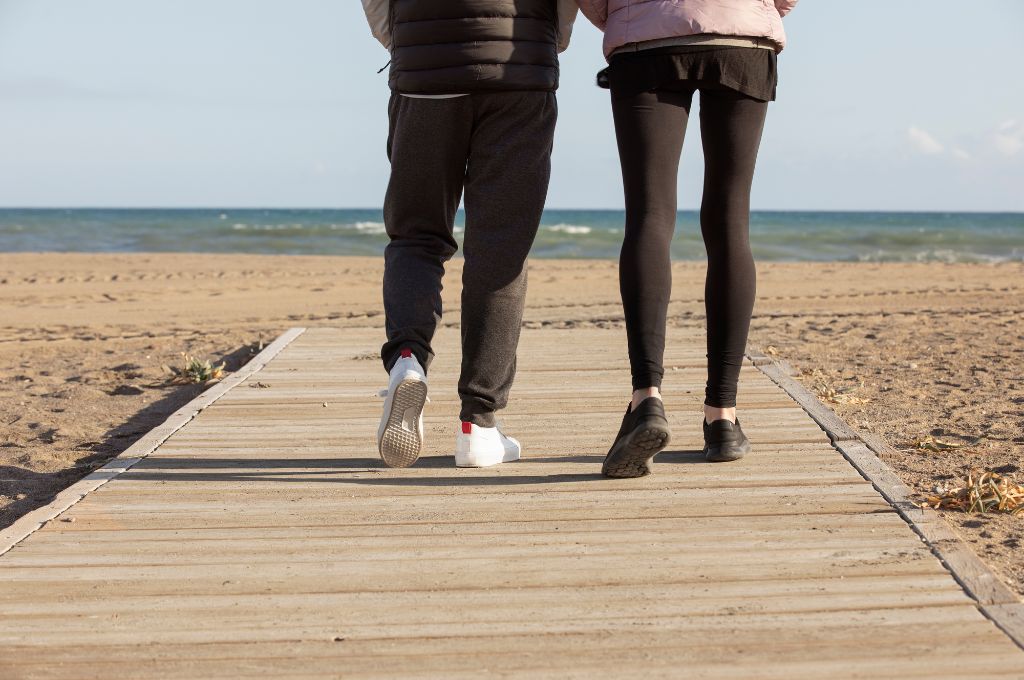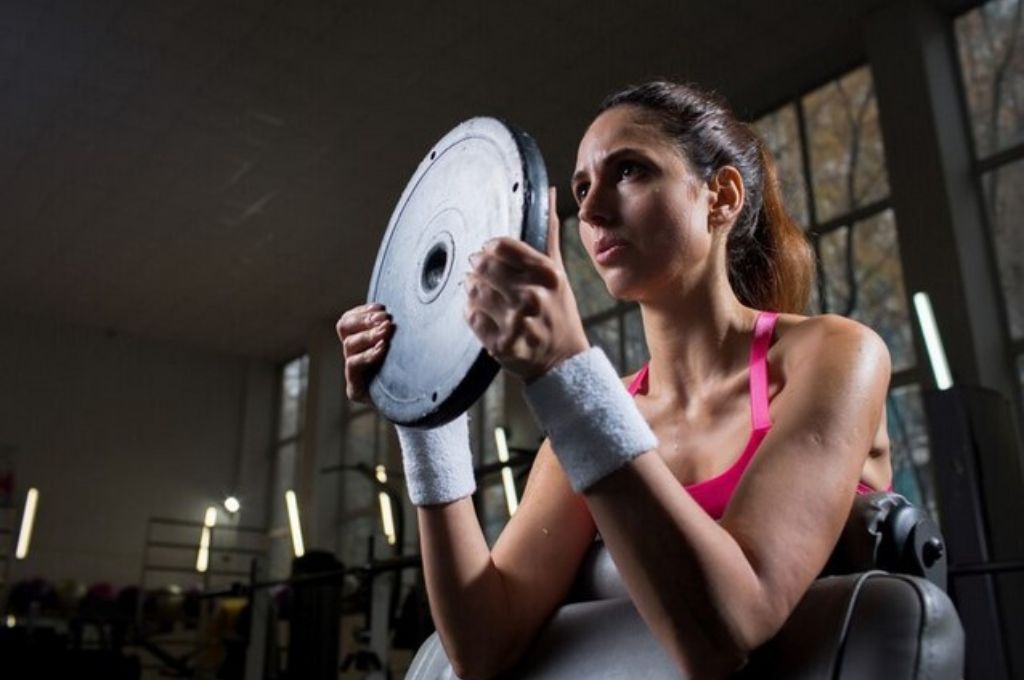The Biological Blueprint:
The human body is a masterpiece of evolutionary design, finely tuned over millennia to suit specific roles and functions. Regarding leg size, women have a slightly different biological blueprint than men. Testosterone, the primary male sex hormone, plays a significant role in shaping the male physique, including muscle mass and bone density. However, estrogen, the primary female sex hormone, influences body composition differently. Estrogen promotes fat storage, particularly in the hips, thighs, and buttocks, giving women’s legs a fuller appearance. This natural distribution of fat contributes to the overall size of women’s legs compared to men’s.
Muscle Composition and Strength:
Beyond fat distribution, muscle composition also contributes to the disparity in leg size between men and women. While men generally have greater muscle mass due to higher testosterone levels, women possess a unique blend of fast-twitch and slow-twitch muscle fibers. This combination provides women with remarkable endurance and flexibility, essential for childbirth and nurturing offspring. Moreover, women’s muscles tend to be more elastic, allowing for a broader range of motion and reducing the risk of injury. Thus, while men may have larger individual muscle fibers, women’s legs exhibit a balance of strength and agility that may contribute to their overall size.
Genetic Influences:
Genetics plays a crucial role in determining the size and shape of an individual’s legs, regardless of gender. Women inherit a combination of genes from both parents, which can influence traits such as height, muscle mass, and fat distribution. Additionally, certain genetic conditions or predispositions may affect how fat is stored in the body, leading to variations in leg size among women. Conversely, men also inherit genetic traits that influence their leg size and shape, albeit through different pathways.
Cultural and Societal Factors:
In addition to biological and genetic influences, cultural and societal factors also shape perceptions of women’s and men’s bodies, including their legs. Throughout history, ideals of beauty and femininity have evolved, often reflecting broader social norms and values. For example, in many cultures, voluptuous curves and ample thighs are celebrated as symbols of fertility and womanhood. This cultural emphasis on curvaceousness may contribute to the perception of women’s legs as more extensive or more substantial than men’s. Similarly, societal expectations regarding physical appearance and gender roles can influence how individuals perceive and present their bodies.
Hormonal Fluctuations:
Throughout a woman’s life, hormonal fluctuations can impact body composition and leg size. During puberty, for example, increases in estrogen levels trigger the development of secondary sexual characteristics, including wider hips and fuller thighs. Similarly, fluctuations in estrogen levels during the menstrual cycle can affect water retention and fat distribution, leading to temporary changes in leg size and shape. Moreover, hormonal changes associated with pregnancy and menopause can also influence body composition, often leading to weight gain and redistribution of fat, particularly in the lower body. Thus, while hormonal fluctuations are a natural part of the female reproductive cycle, they can also contribute to variations in leg size over time.
Nutritional Considerations:
Nutrition plays a vital role in shaping the size and composition of an individual’s legs, regardless of gender. Women require essential nutrients such as protein, vitamins, and minerals to support muscle growth and repair and maintain optimal bone density. However, nutritional needs vary depending on age, activity level, and reproductive status. For example, pregnant women may require additional calories and nutrients to support fetal development, which can lead to temporary increases in leg size. Conversely, inadequate nutrition or imbalanced diets can impair muscle growth and repair, reducing leg size and strength. Thus, a balanced and nutritious diet is essential for maintaining healthy and proportionate legs, regardless of gender.
Exercise and Physical Activity:
Regular exercise and physical activity are important in shaping the size and strength of women’s and men’s legs. Strength training exercises such as squats, lunges, and leg presses can help build muscle mass and increase overall leg size. Similarly, cardiovascular activities such as running, cycling, and swimming can improve endurance and promote fat loss, leading to leaner and more defined legs. Moreover, flexibility exercises such as yoga and Pilates can enhance the amplitude of motion and reduce the risk of injury, contributing to overall leg health and functionality. Thus, incorporating various exercises into one’s fitness routine is essential for achieving balanced and well-developed legs, regardless of gender.
Aging and Hormonal Changes:
As individuals age, hormonal changes and shifts in body composition can affect the size and shape of their legs. Women, in particular, experience significant hormonal fluctuations during menopause, including declines in estrogen levels and increases in cortisol, the stress hormone. These hormonal changes can lead to reductions in muscle mass and bone density and increas in fat accumulation, particularly in the abdomen and thighs. Consequently, many women may notice changes in the size and shape of their legs as they age, including decreases in muscle tone and increases in cellulite.
Environmental Factors:
Environmental factors such as climate, geography, and occupation can also influences the size and shapes of women’s and men’s legs. For example, individuals in colder climates may have thicker layers of subcutaneous fat to provide insulation and warmth, leading to larger overall leg sizes. Similarly, individuals who engage in physically demanding occupations, such as farming or construction work, may develop larger leg muscles due to repetitive lifting, carrying, and bending movements. Moreover, cultural practices such as traditional dance or sports can also impact leg development and size, with specific activities emphasizing strength, flexibility, or endurance. Thus, while genetic and biological factors significantly determine leg size, environmental influences can further shape and mold individuals’ physiques over time.
Fashion and Clothing Trends:
Fashion trends and clothing styles can also influence perceptions of women’s and men’s legs, often emphasizing specific attributes or concealing others. For example, high-heeled shoes can elongate the appearance of a woman’s legs and accentuate the calves and thighs. Similarly, tight-fitting clothing such as leggings or skinny jeans can draw attention to the contours of the legs, creating the illusion of slimmer or more toned limbs. Conversely, loose-fitting garments such as maxi skirts or wide-leg pants may offer comfort and modesty while downplaying the size or shape of the legs. Thus, fashion choices can significantly shape how individuals perceive and present their legs to the world.
Media Representation and Beauty Standards:

Media representation and beauty standards often perpetuate narrow ideals of beauty that prioritize thinness and perfection, particularly for women. Consequently, many individuals are bombarded with images of airbrushed models and celebrities with seemingly flawless legs, leading to unrealistic expectations and comparisons. Moreover, the lack of diversity in mainstream media can further perpetuate harmful stereotypes and narrow beauty standards, excluding individuals with different body types and sizes. Thus, media literacy and representation are crucial for promoting a more inclusive and diverse portrayal of beauty, including women’s legs of all shapes and sizes.
Evolutionary Perspectives:
From an evolutionary standpoint, differences in leg size between women and men may have served adaptive purposes related to reproduction and survival. For example, women’s wider hips and fuller thighs may have provided advantages during childbirth, allowing for easier passage of the baby through the birth canal. Similarly, men’s larger leg muscles may have conferred advantages in hunting, gathering, and physical combat, contributing to their role as providers and protectors within society. Moreover, physical traits such as leg size and shape may have served as indicators of health, fertility, and genetic fitness, influencing mate selection and reproductive success. Thus, while modern lifestyles and societal norms may have shifted, our biological heritage profoundly shapes our bodies and behaviors.
Intersectional Considerations:
It’s essential to acknowledge that discussions about leg size and body image intersect with issues of race, ethnicity, gender identity, and socioeconomic status. For example, beauty ideals and body standards vary across cultures and communities, with some emphasizing voluptuousness and others favoring thinness. Similarly, individuals from marginalized backgrounds may face additional barriers and challenges in accessing resources and opportunities for physical health and well-being. Consequently, it’s crucial to approach discussions about leg size and body image with sensitivity and awareness of intersecting identities and experiences. Moreover, promoting body positivity and acceptance requires addressing systemic inequalities and advocating for social justice and inclusivity.
Health Implications:
Beyond aesthetics, leg size can also significantly affect health and mobility. Women who carry excess weight in their lower bodies may be at increased risk for health conditions such as varicose veins, cellulitis, and joint pain. Similarly, individuals with disproportionately large or small legs may experience balance, gait, and mobility difficulties, impacting their quality of life and independence. Thus, prioritizing leg health and fitness is essential for a happy, active, fulfilling life.
The Role of Genetics:
While genetics plays a significant role in determining leg size and shape, it’s essential to recognize that they are not the sole determinants. Moreover, epigenetic factors such as gene expression and hormonal regulation can further modulate how genetic traits manifest in the body. Consequently, individuals can influence their leg size and overall health through lifestyle modifications and behavioral changes, regardless of their genetic predispositions. Thus, while we may inherit certain traits from our ancestors, we also have the agency to shape our bodies and destinies through our actions and choices.
The Myth of Spot Reduction:
Despite popular belief, it’s impossible to selectively reduce fat from specific body areas through targeted exercises or spot-reduction techniques. Fat loss occurs systemically, affecting the entire body rather than just one location. Thus, performing endless leg exercises or using gadgets promising to “melt away” fat from the thighs or calves is unlikely to produce significant results.
Embracing Diversity:
Recognizing and celebrating the diversity of women’s and men’s bodies, including their legs, is essential. Everyone is unique, with their own genetic heritage, life experiences, and cultural influences shaping their physical appearance. Consequently, there is no one-size-fits-all approach to beauty or health; comparing oneself to unrealistic ideals only leads to dissatisfaction and unhappiness. Instead, we should embrace our bodies in all shapes, sizes, and imperfections, recognizing that beauty comes in many forms. They were moreover promoting body positivity and self-acceptance, which benefits not only individuals but society as a whole, fostering a culture of inclusivity and empowerment.
The Importance of Self-Care:
Taking care of one’s body is essential to overall well-being, including women’s and men’s legs. Regular exercise, proper nutrition, adequate rest, and stress management are crucial for maintaining healthy and robust legs. Moreover, paying attention to signs of discomfort or pain and seeking appropriate medical care can help prevent injuries and address underlying health issues. Additionally, practicing self-love and self-compassion is essential for nurturing a positive body image and cultivating a healthy relationship with one’s body. Thus, prioritizing self-care and making conscious choices that support physical and emotional health is vital to living a vibrant and fulfilling life.
Conclusion:
The question of why women’s legs are more significant than men’s is multifaceted, encompassing biological, cultural, and psychological factors. Women inherit a unique biological blueprint that influences their body composition, including fat distribution and muscle composition. Additionally, cultural perceptions of beauty and societal norms significantly shape how women perceive and present their bodies, including their legs. Moreover, psychological factors such as social comparison and body image can impact women’s feelings of self-worth and confidence. Ultimately, the size of a woman’s legs is just one small aspect of her overall identity and worth. Focusing on health, happiness, and self-acceptance can create a more inclusive and compassionate world where all bodies are celebrated and valued.




